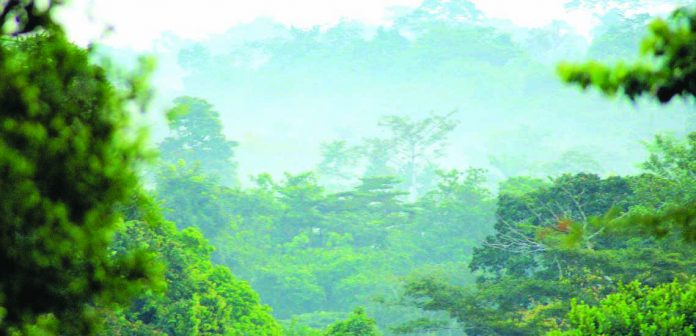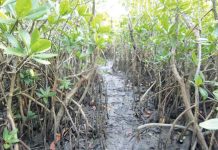
IT is common knowledge that planting trees tackles the causes of climate change by absorbing carbon emissions. Less known is the fact that forests also treat the symptoms of climate change, whether they are heatwaves, drought or crumbling coastal towns.
The outsize potential of trees to halt the climate crisis has generated a lot of media buzz recently, and rightly so – trees have an enormous capacity to absorb carbon emissions. Yet something crucial is missing from these stories. Forests don’t just absorb carbon; they also defend us from its most devastating impacts.
Heatwaves have been scorching India and Europe this summer, killing dozens of people. This July was the hottest month ever recorded, while the previous month was the hottest June on record. But as our air-conditioning systems whirr incessantly, providing much-needed respite from the stifling heat, they guzzle masses of fossil fuels, which in turn heats the planet. Our houses may stay cool, but the planet doesn’t.
There’s a growing recognition that one of the best technologies for tackling overheating cities was invented long before humans appeared: trees. Bringing parks, green spaces and canopies into cities has a cooling benefit during hot days; plants absorb water and then release it through evaporation, in the same way sweating keeps us cool.
On a sunny day, from evaporation alone, a single healthy tree can have the cooling power of more than 10 air-conditioning units. That’s not including the shade they provide for buildings, which in the United States can reduce air-conditioning costs of detached houses by 20 percent to 30 percent. And instead of emitting more carbon, trees absorb it. Not to mention, trees have the ability to filter air pollution, improving our health and that of the planet.
The city of Melbourne, Australia, is aiming to almost double canopy cover – from 22 percent to 40 per cent – by 2040 to tackle heatwaves. Around 3,000 new trees will be planted each year.
This way of using nature to adapt to climate change, known as “ecosystem-based adaptation” or “nature-based solutions,” is, quite literally, a breath of fresh air.
It’s part of a much larger paradigm of environmental problem-solving called nature-based solutions. The United Nations Secretary-General’s Climate Action Summit this month will provide an opportune moment to catapult nature-based solutions to the forefront of climate action.
Moving from cities to coasts, forests are again a major defense against extreme weather.
One of the more ominous prospects of climate breakdown is rising seas that threaten to sink cities or slowly drag them into the ocean. The evidence is overwhelming that mangrove forests are effective and cheap natural barriers against coastal floods and shoreline erosion. They reduce both wave height and wave force. In fact, if all of today’s mangroves were lost, the global damage from flooding would be an extra 82 billion United States dollars a year. (Unenvironment.org)



